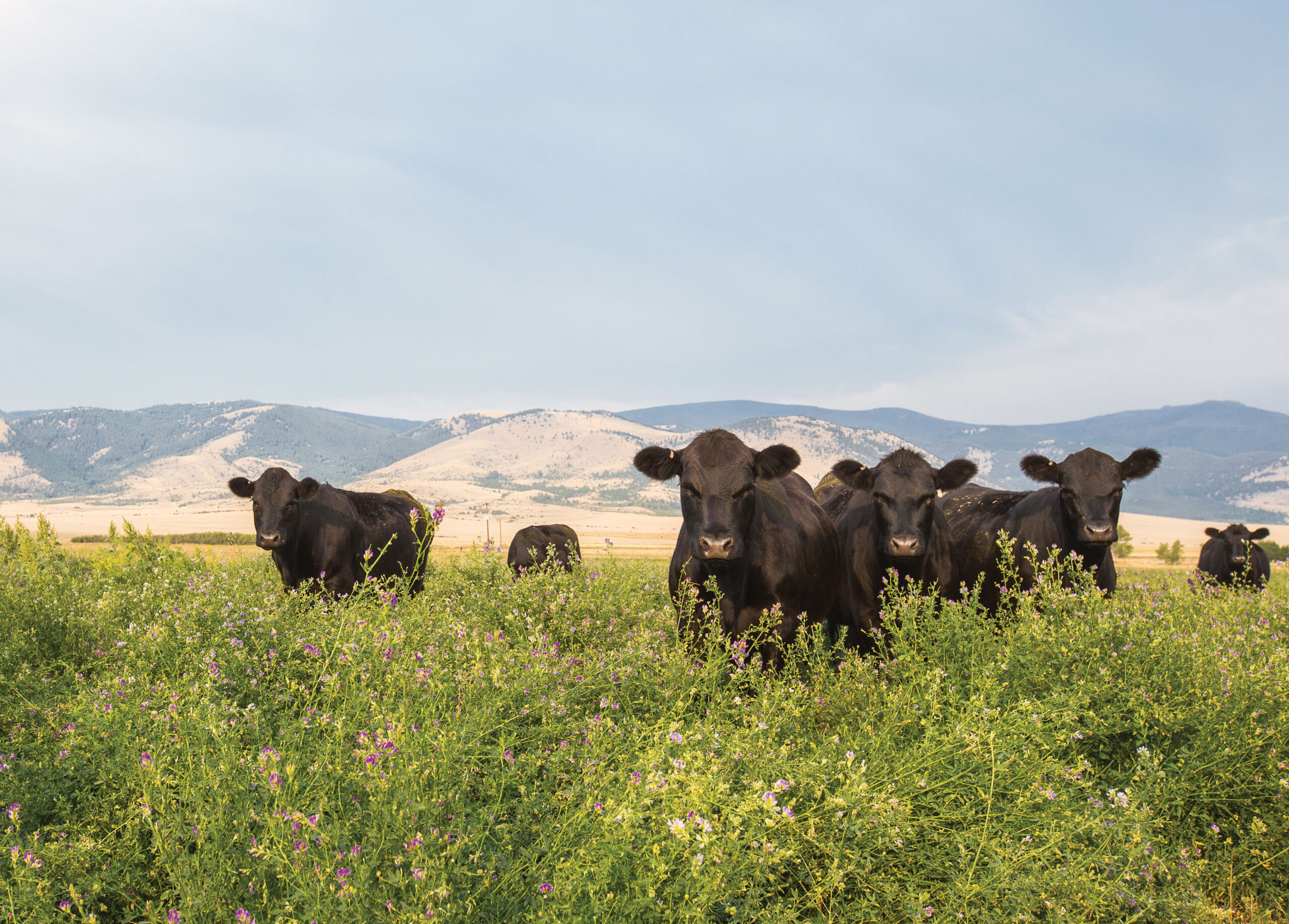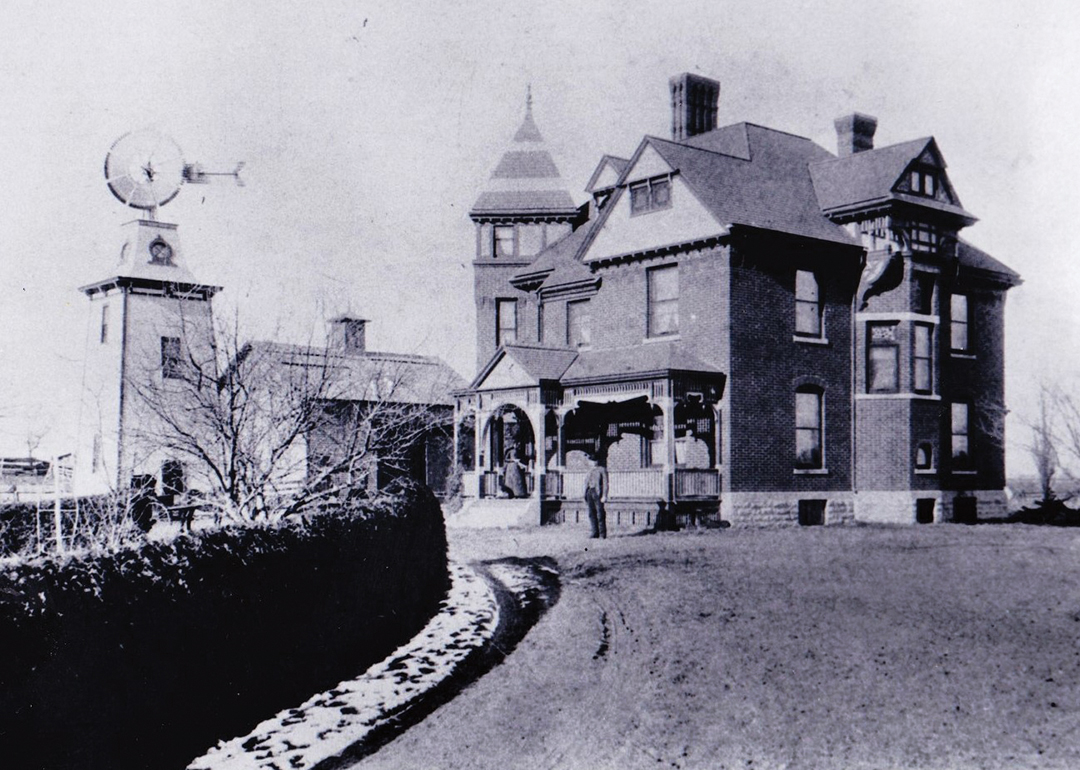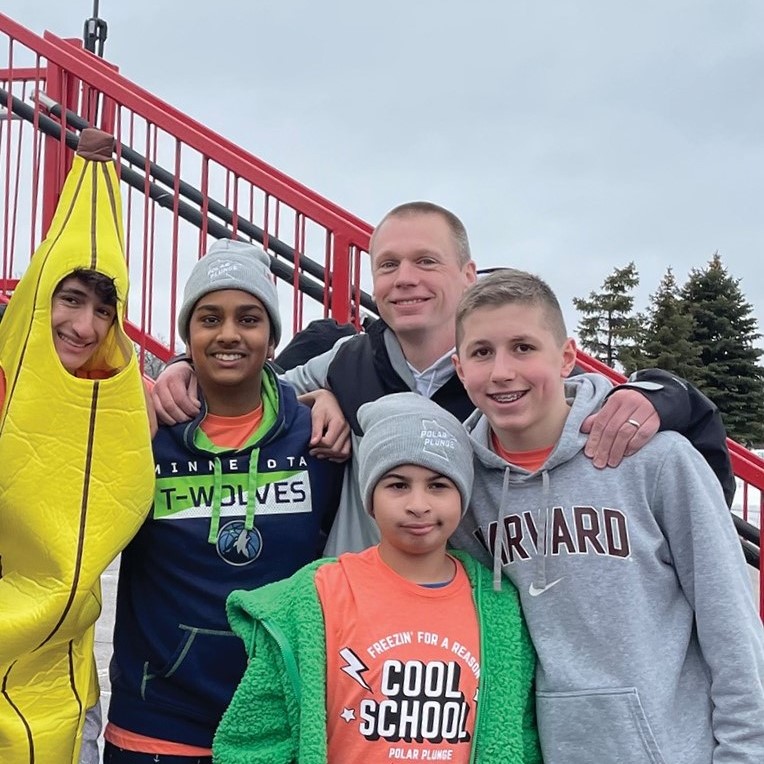
Photos: Mulvey Gulch Ranch
Jerry’s Enterprises sources grass-fed beef directly from its ranch in Montana, prioritizing traceability and sustainability.
In the far off expanse of Jefferson County, Montana, nestled amid the snow-capped Elkhorn Mountains, a herd of Black Angus cattle grazes peacefully. As days become weeks, workers on horseback guide the cattle through the valley to new pastures and elevations, where the animals will find new grass varieties to sample. Their hooves till and their droppings nourish as they move through the fields, encouraging soil regeneration and further grass production.
“It’s a very symbiotic relationship,” says Roger Nunn, manager of meat operations for Jerry’s Enterprises’ Mulvey Gulch Ranch project. (The ranch is owned by the same family that owns Jerry’s Enterprises Inc.) “Without good soil, we can’t have good grass. Without grass we can’t raise cattle,” Nunn says.
It’s not often that people can trace where their meat came from—not to mention how it was raised and what it was fed. But for shoppers of Jerry’s Enterprises grocery stores—including Jerry’s Foods, select Cub Foods locations and County Market stores in Minnesota and Wisconsin—accessing quality meat from happy cows is as easy as finding a package of Mulvey Gulch Ranch beef.
It’s an operation decades in the making, built upon the grass-fed meat movement and an interest in producing antibiotic-free, 100 percent grass-fed and range-raised beef without added hormones for Jerry’s Enterprises customers. Though the company has only been direct-sourcing its own grass-fed beef from Mulvey Gulch Ranch since 2018, it’s worked with the same herd of Black Angus cattle since purchasing the property in 1998.
“Our meat comes from our ranch,” Nunn says. “We don’t import cattle. We don’t buy cattle. We raise our own cattle on the ranch … So, if we send a box of our meat to Minnesota, or we sell it in Montana, we will always know where that animal came from. And we can look at the box and tell you what week it was harvested, and we can tell you out of which lot of nine to 15 animals it came from. Our traceability is very important to us.”
Now, Mulvey Gulch Ranch is home to approximately 70 bulls and 4,000 cattle that graze the ranch’s 92,000 acres year-round. When the cattle reach their full weight (about 1,350 lbs.) at 26 months (as opposed to the general industry standard of 12–14 months), they’re loaded into trailers and harvested at a processing facility just 40 miles from the farm. That final trip is the first time in their lives that the pasture-raised cattle will see equipment; day-to-day, the ranch uses cowboys, horses and herding dogs to move the cattle around the land.

“We want that animal to be treated well. We want it to be appreciated on the dinner table, because it’s gone through a lot to get where it is,” Nunn says. Every decision that Jerry’s and Mulvey Gulch Ranch make is for the wellness of the land and the animals that call it home.
And the cattle aren’t the only concern for the ranch. Each year brings new triumphs and challenges, with field experiments, observation and research on grass production, meat yield and cattle nutrition. The ranch works with food scientists at Montana State University and is a certified member of the American Grass Fed Association and Western Sustainability Exchange, all in an effort to keep the cattle and soil environment
as healthy as possible.
“In the last five-plus years, we’ve … [made] continuous improvements in our animal husbandry and land and grass management,” Nunn says. “That’s our future … making sure that land and soil is renewable and sustainable.”
Recently, that’s involved a small-scale experiment of feeding hay to cattle in “dead” areas with poor soil, Nunn says. The cattle stir up the soil as they move around and fertilize it with manure, making it more receptive to natural seeding.
And then there’s learning how long is best to leave the cattle in certain areas. Too long, and they’ll eat the grass too far down, pulling out the roots. Plus, rotating the type of grass they consume has benefits for the cattle.
“We raise the animals to be healthy, and we want that animal to provide a healthy experience for our consumers who more and more are looking for better diets,” Nunn says. The resulting Mulvey Gulch Ranch beef is significantly higher in Omega 3, CLAs and essential vitamins and lower in calories and saturated fats. “It’s great tasting and healthier for you,” Nunn says. It can be found at Jerry’s Foods in Edina in a variety of cuts and styles, including ground beef, rib-eye, tenderloin summer sausage, jerky, hot dogs and more.
Jerry’s Foods
5125 Vernon Ave. S.; 952.929.2685
Facebook: Jerry’s Foods – Edina
Instagram: @jerrys_foods






















